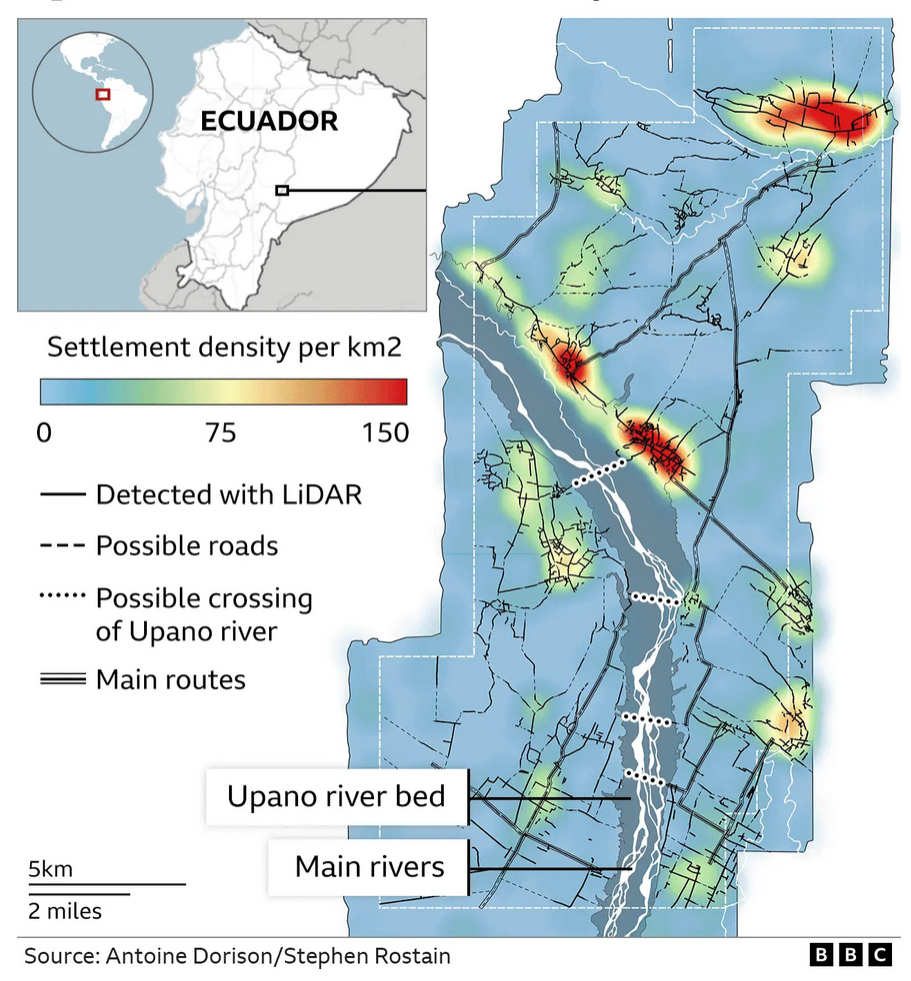Thanks to aerial lidar surveying, a huge ancient city has been uncovered in the Amazon, unseen for thousands of years due to lush vegetation. While the discovery of ancient ruins in eastern Ecuador, or anywhere on the planet, isn’t news, the overall scale of the finding is.
 Cities in the highlands of South America, like Machu Picchu in Peru, have been known of for some time, and it was believed that people in the Amazon basin only lived nomadically or in tiny settlements.
Cities in the highlands of South America, like Machu Picchu in Peru, have been known of for some time, and it was believed that people in the Amazon basin only lived nomadically or in tiny settlements.
“This is older than any other site we know in the Amazon. We have a Eurocentric view of civilization, but this shows we have to change our idea about what is culture and civilization,” says Dr. Stephen Rostain, director of investigation at the National Centre for Scientific Research in France, who led the research.
“It changes the way we see Amazonian cultures,” says co-author Antoine Dorison. “Most people picture small groups, probably naked, living in huts and clearing land. This shows ancient people lived in complicated urban societies.”
Archaeologists combined ground excavations with a survey of a 300 square kilometers (116 square miles) area using airborne lidar to identify remains of the city beneath the dense plants and trees. Lidar technology found 6,000 rectangular platforms measuring about 20 meters (66 feet) by 10 meters (33 feet) and two to three meters high. A network of straight roads and paths connected many of the platforms, including one that extended 25 kilometers (16 miles). Dorison said these roads were the most outstanding part of the research.
“The road network is very sophisticated. It extends over a vast distance, everything is connected. And there are right angles, which is very impressive,” he says, explaining that it is much harder to build a straight road than one that fits in with the landscape. The scientists also identified causeways with ditches on either side which they believe were canals that helped manage the abundant water in the region.
